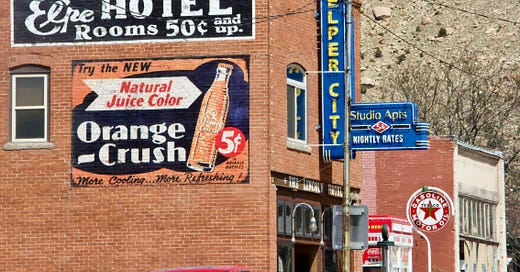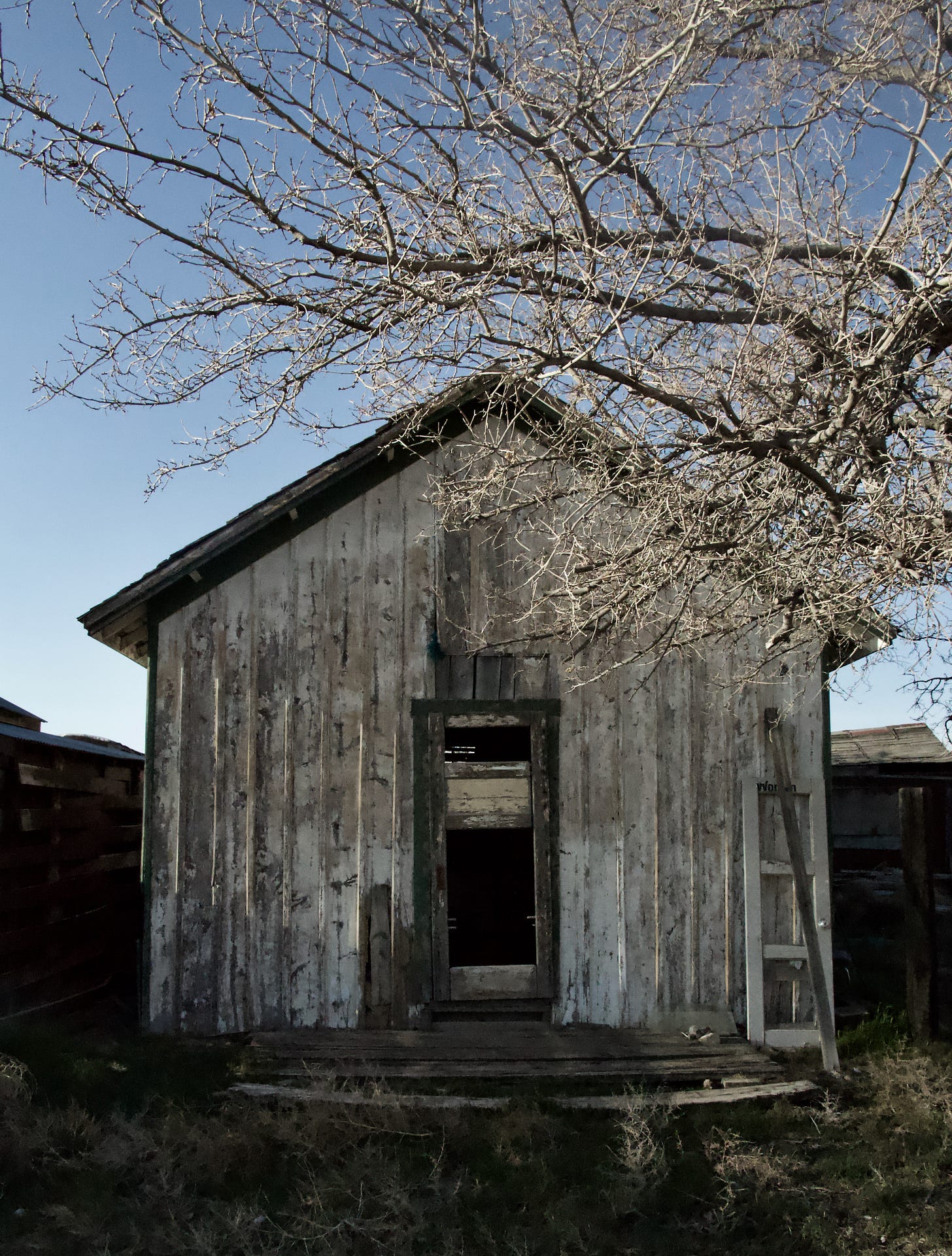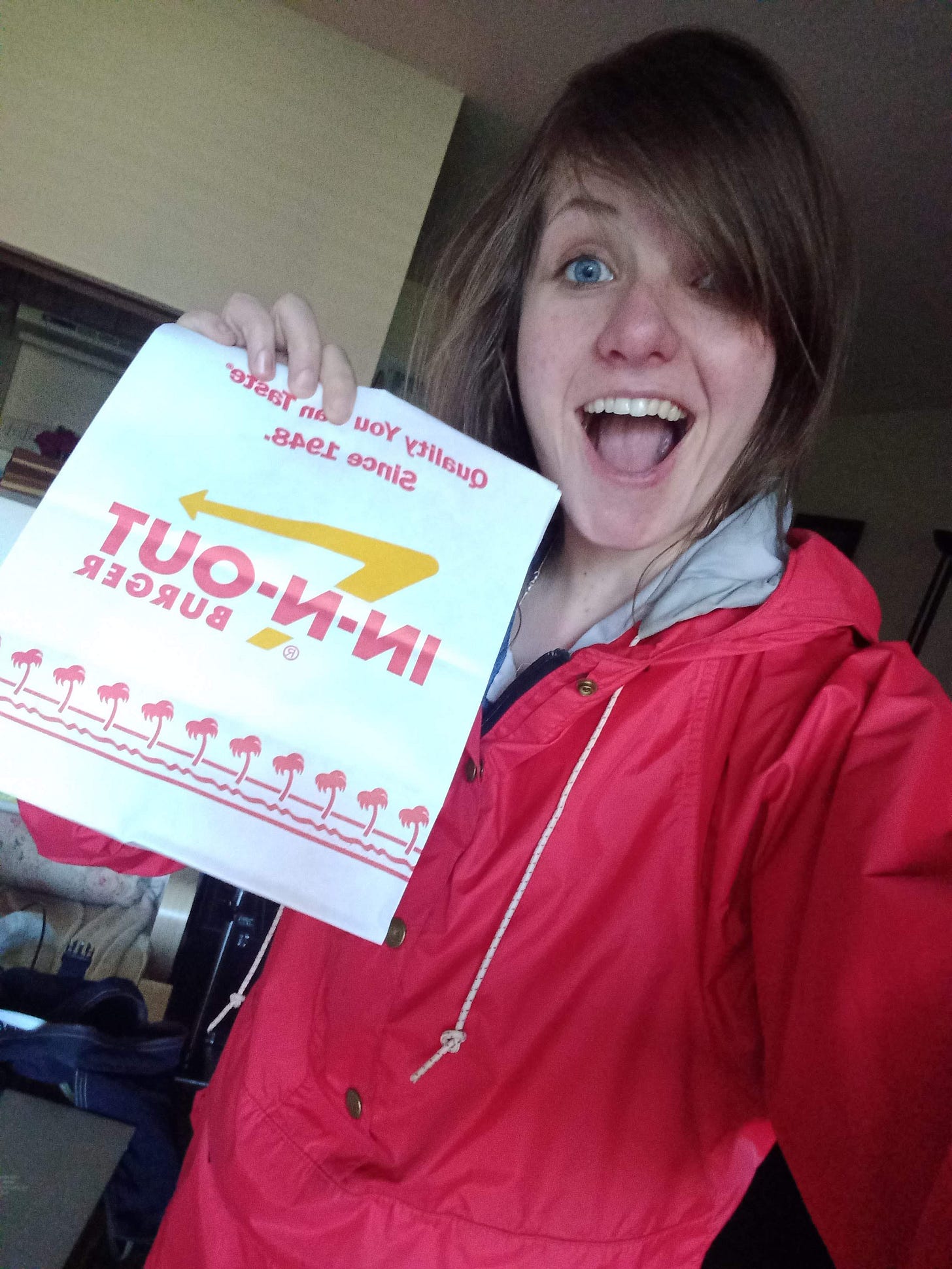Been sitting on this piece for a while. I haven’t found an outlet that it feels right to pitch it to, so I’ll share it here for free. It’s a bit about my travels in Utah, more of that adventure and subsequent realizations to come, as promised. But it’s a first little taste into the ideas I want to talk more about: of stories in stones, of locality, of place and one’s relation to it.
My family home was surrounded by acres and acres of forest not far from the rocky coast of the Atlantic. My dad would take my sister and I on long adventures in the woods, making sure we wore brightly colored clothes since hunters were always about, and classify birds by their calls: the mourning dove, white-breasted nuthatch, tufted titmouse, and, of course, the black-capped chickadee-dee-dee. Even though our home was mostly encased by the forest, salt both from the nearby marsh and the ocean would still sift its way through the trees and sting the air. It was this musty-fishy smell mixed with the whiff of pine that I’d welcome with childlike pleasure whenever we were coming back from visiting our grandparents in the midwest: it meant we were home and away from the cicada-infested humid airs.
However, as my sister and I grew up the expansive and wild forest was cleared and became a booming area of cul-de-sacs for micro-mansions. The natural, albeit chaotic, collection of conifer trees and their surrounding ecosystem traded for perfectly groomed lawns, a signal of class that you had the time and money to (hire someone to) tend to it with precision. It feels like part of my youth was destroyed in the chopping of trees, and the once quiet forested street has become a through-road for cars that drive fast and dangerously despite the numerous homes branching off of it.
I want to feel justified in my frustrations of my hometown becoming a place of emergent growth. The pond we have is now constantly filled with muck, pollution, and chemical blooms. Perhaps the sea breeze is more accessible to us now, but at what cost? Americans already get enough salt in their diet, and now it overwhelms the air too with the loss of the earthy terpenes.
However, despite feeling righteous indignation, I know I should not complain about my hometown becoming more and more populated given the hardships that many small towns currently face: changing and shrinking industrial opportunities, shifting and reduced economic prospects, and dwindling and aging populations. Despite these challenges, I and many others fall in love with small towns, or at least the myth of them. I crave an excuse to make a pie or cookies for my neighbors and their kids, I pick up a CSA box and chat with the local farmers, I know the best spots in town because they’re all conveniently on the main street, Ol’ Bill with his dog will check in on you if he hasn’t seen you in a few days, and it all feels quaint and simple and beautiful.
While these attributes are very real, the myth is that this is all they are: simple, sweet places with a tight community and no struggles. It’s Pleasantville before Toby Maguire's and Reese Witherspoon's characters disrupt and complicate the scene. As with all things though, there’s a darkness, a shadow side, to small towns: invasive gossip, poverty, intolerance to anything new or different, and isolation. These traits make the place real and not merely a dream of homegrown tomatoes, neighborhood block parties, and being far away from the business (or busy-ness) of urban spaces. Perhaps it’s the reality that emerges only when one stays in a place long enough to feel the culture and economy of the locals, attributes that are impossible to untangle.
Economically, most small towns have something going for them. Perhaps it’s a particular industry that’s managed to stayed afloat, a small university, a hospital, some sort of tourist-based history. For my hometown, initially an important trading stop and the battle grounds for pre-American revolution scuffles, it is now suburban sprawl from the nearby city exacerbated further by many leaving cities all together during the pandemic.
In his essay, Small Town USA, Phil Christman says:
The picture of a successful town presented here is of a place that has given up any hope of surviving without the patronage of people who live elsewhere, that is, in cities—where, presumably, actual things are still being made. The so-called successful town offers those people nice scenery (travel and tourism), some things to look at while they recharge... Perhaps there is nothing else for small towns to do at this point; economic interdependence of some kind is unavoidable, an aspect of our creaturely nature, and it would surely be better to live off tourism than to destroy, as small-town industry often did, so much natural beauty and biological richness.
These claims remind — and perhaps convict me — of enjoying passing through a small Utah town admits its own revitalization. Helper City, once a booming railroad and mining town in the late 1800’s, had been left more or less alone in the desert between the larger cities of Salt Lake and Moab. Luckily, the dryness preserved its nineteenth century features such that when you drive down main street you are truly transported back to a time you’d never think you’d be able to experience. Much of this is due to the artists of the late 90’s and early 2000’s who rediscovered this sleepy town and decided that it was the place to plant themselves and create something beautiful. And indeed they did: it’s the cutest town I think I’ve ever seen and I tell anyone to stop by if they’re ever driving along I-191 because the history is intriguing; the food, delicious; and the surrounding landscape, full of adventure.
I say that Christman’s statement convicts me because the town is what it has become due to influence from people “from away.” An artist — who shared with me much of the history, food recommendations, and secret petroglyph spots (who’s gallery and dwelling space is in a converted JCPenny’s) — is from a town more than an hour away and his fiancé who owns the vintage shop down the street is from out of state. Helper City has remade its way onto the cultural map because of people not from there, risking becoming kitschy and contrived and all the hallow and inauthentic terms surrounding the capitalistic cheep tourism industry. Yet so far, at least from my very small encounter of the space, the history is preserved, respected, and honored. Helper City currently is an International Dark Sky Place unpolluted by lights and the past is known, and its old stories are kept alive by being shared readily to those who’ll listen.
Helper City, UT.
Hours before I explored Helper City, I stopped at a place my cousin claimed was a ghost town: Thompson Spring. Once a mining town alongside the Sego Canyons, Thompson’s decline started when railroads replaced coal-powered steam engines, and was solidified when an interstate was built a few miles south and Amtrack ceased to stop at their station.
Especially in the already dry hazy heat in the early morning after passing only a gas station selling “alien jerky” (which was regrettably closed at the time) for miles, I, like my cousin, likewise assumed that the assemblages of structures without any sign of commerce, government buildings like a court or post office, or a grocery store was indeed abandoned and the houses and trailers, unoccupied. Confident, I made many stops along the town, entered the buildings (double masked to prevent any infection of hantavirus that my cousin warned me about having contracted it herself when she visited Thompson Spring years ago), and photographed the decay. But then a truck drove by, the driver giving me the dirtiest look, full of distain, confusion, and insult.
No, this town was not abandoned. People lived there, not in the house I was stepping out of at least, but still I was trespassing. I wasn’t welcome. I was “from away,” and gawking at the state the town found itself in. The mood quickly became, for me, uncanny, uncomfortable. This is their lives. It may be beautiful and interesting to me, but it’s truly just a Thursday.
Maybe it’s good to document places like these, to show that they exist. But without the story, what do these pictures show? Decay, worn down, almost forgotten, a voyeurism? While I do not investigate or inquire (I am a poor excuse of a journalist having been too ashamed of myself to intrude further into their lives), I still wonder what kind of people remain in this “abandoned town”? Who are they? And beyond that: are some things and places letting go of, archived in history alone and not embodied?
Empty house in Thompson Springs.
Christman continues and similarly asks:
So what is a small town to do? One school of thought, advocated by Princeton professors of civil and environmental engineering Deborah Popper and Frank Popper, is the idea of “smart decline”: planning intelligent ways to live and use existing space without assuming that the city or town will ever again experience upwardly spiraling growth.
For a very long time, I had thought that this was resignation, a giving up. That if the small town wasn’t “successful” yet then they should be striving to become such. That perspective is one full of assumptions, privilege, and expectation. I don’t know or understand these places. I likely pretend to as a means to show my appreciation for them or perhaps to demonstrate that I don’t want places and their history to be left behind, forgotten, not lived out. But perhaps without more context though, “caring” about them does more harm. Perhaps it could change them into something that they’re not supposed to be.
For some reason though, Helper City doesn’t feel inauthentic. Maybe it’s because the residents know and share its story. Maybe it’s because someone’s taken great care to recreate the look and feel of a western mining town from 1930. However, I feel that the space is “authentic" as a fellow tourist conversing with others who are “from away,” enjoying a snapshot of the past that I can document and participate and adventure in in some capacity. In Thompson’s Spring, where there seemed little hope of a similar revitalization — there was no cafe I could stop at, no cute artist shop to meander around, and the closest “feature of interest” were some petroglyphs on land that, in retrospect, might have been reservation territory. I felt like I shouldn’t have been there, that I was not welcome to participate. That this land in the hay-colored haze shimmering in the valley wasn’t mine to enjoy and was best off to be left alone.
This is a similar tone and aesthetic that I experienced reading W.G. Sebald's Rings of Saturn. In this book, the unnamed protagonist strolls along the coast of England and comes across abandoned towns and fishermen attempting to preserve their traditional ways of life with, in his opinion, no hope of it being perpetuated into further generations. And it was this book — in addition to the layered performance that I borrowed it from someone, annotated it, and gave it back such that I have no physical trace of it accessible to me or material object to which to refer anymore — that made me appreciate and start to think that a town's decay is inherent to the fact that they had once been successful, and that it's natural to have endings.
There is no antidote... against the opium of time. The winter sun shows how soon the light fades from the ash, how soon night enfolds us. Hour upon hour is added to the sum. Time itself grows old. Pyramids, arches and obelisks are melting pillars of snow. Not even those who have found a place amidst the heavenly constellations have perpetuated their names: Nimrod is lost in Orion, and Osiris in the Dog Star. Indeed, old families last not three oaks. (Rings of Saturn)
It’s in the small town realities and their relationship to their corresponding myths that we must reckon with and understand their temporalities. Places, regardless if they’re integrated with human activity or not, change. In our age of global capitalism and the ease at which one can travel and move, I have to remind myself that nothing is actually isolated. These small towns are impacted by events far away, perhaps with a delay, and as such they’re not the isolated havens from the rest of the world that I expect and desire them to be. As the saying goes, “wherever you go, there you are.” Troubles are everywhere. We carry them with us and bring them to places that may or may not have asked for our presence.
One thing becomes another, and just as we are changed by places, the places are changed by us. And as such, now that I’m settled in my own small town tucked away in the hills of southern New York, I try and stay aware of how I interact with the land and with the community to ensure that it’s true and authentic to what the space is and what it all means. I’m trying to, as Ivan Illich described, “let daily life write the webs and knots of [my] biography into the landscape... etched into stone by successive generations or sketched anew for each rainy season” and reciprocally let the place etch me.
In essays past, I’ve added a currently reading/recently read list. I’m going to save that for another post and instead gift you with another photo from my travels. It’s always fun to look back through memories, that’s the magic of photography, really: to transport you back to that time and place, export your mind and body back to where you had been. Rebecca Solnit has described it as a kind of Ghost Dance, bringing back the dead through film that denies the linearity of time in her work River of Shadows: Eadweard Muybridge and the Technological Wild West.
I was lucky to have taken so many fantastic shots during my travels in Utah of, as I’m still learning and realizing, entirely of life. From the few other hikers, to the tumbleweeds, to the massive sandstones, even the stones have their stories to tell. And the scenic views are astounding, no words can really do them justice. You can see a few of them on my Instagram. But the photo I want to share here, one that kind of stopped me in my tracks in going back through and finding the photos I shared in the story above, is a — I’m so sorry, this is very millennial of me — selfie.
Animal Style, duh
This was just over two years ago and this chipper gal has so much change ahead of her. Ahead of going into the Canyonlands for 10 days solo backpacking in the back country, I stopped at one of my good friends places in Salt Lake City. We had been part of a DND campaign where In-N-Out was prominently featured in any town that we stopped in and, being the east coaster I am, had never been to one so I felt obligated to make a special trip out to get a burger and fries. I look so genuinely excited, I look like I’m overflowing with energy, I look so young.
Since this picture, I went on that pilgrimage in the desert, got back to New York, started dating the man who goes on to become my husband, and have a baby. Pictures of me now don’t share that energy and no longer has that youth. I’m certifiably changed. Looking at this photo of me, it does really feel like a séance, a part of the past has come back to look me dead on in the eyes.
There’s a part of me that’s sad I’ll never look this way again, that I’ll probably never really get a chance to do a solo adventure like that again. But the bigger part of me knows that adventurous spirit, spunk, and easy smile lives on in me now and I get to share it with my growing family in new ways. Much like how I balance wanting my son never to grow up but also knowing that he must and denying him the experiences of becoming a boy and a man would be cruel, I can get disheartened about aging and marching towards death. But then I remember that I too am transforming and growing and how wonderful is it to keep living. This little selfie of me with a burger and fries is only so impactful to me right now because of the amazing distance yet intimate closeness between me and her. So may we keep finding things that spark joy, keep those moments close to heart, and preserve them in our minds on rainy dark days.





